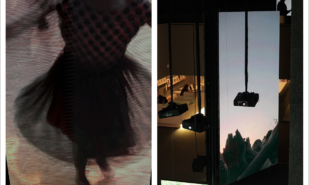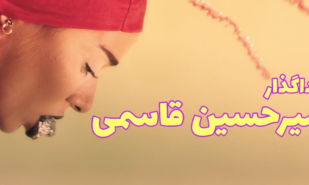Invitations to social and business events often include wishes or requirements to dress according to a specific dress code, which means that all guests must adhere to certain rules.
You are about to participate in a reception, presentation, or ball. On the invitation, you come across mysterious abbreviations, such as “White Tie” or “Black Tie.” A person attending a formal event cannot do without knowledge of social etiquette.
In addition to indications about attire, on invitations, you may find other important conventional signs. Among them could be:
- S.t. (sine tempore) — precisely, on time, without delay;
- C.t. (cum tempore) — with a delay of no more than a quarter of an hour;
- R.S.V.P (Réponse S’il Vous Plait) — please respond.
Ignoring the RSVP (Réponse S’il Vous Plait) is a major breach of social etiquette. If you receive an invitation to a presentation, ball, or reception, regardless of whether you intend to attend or not, please respond. Your response should be delivered no later than the eve of the celebration.
If the invitation does not specify “For two persons” and the desirable presence of a spouse is not explicitly stated, it is better to attend without an accompanying partner. Business events also do not presume the presence of a spouse unless they are directly involved in the business. However, for social events like balls, charity evenings, concerts, and dinners, it is appropriate to bring a companion.
Dress Code: Attire for Formal Events
Black Tie (Cravate noire – French): “black tie”.
Both dress codes, “White Tie” or “Black Tie,” are suitable for events after 18:00. The “White Tie” dress code is more formal than “Black Tie.”
Black Tie is appropriate for formal receptions, social and solemn dinners, opera premieres, balls, high-level official receptions, and Oscar ceremonies.
The “Black Tie” dress code for men consists of six elements:
- Black tuxedo, either single-breasted or double-breasted.
- Black trousers with a silk stripe on the sides.
- Black leather or patent Oxford shoes.
- Black silk bow tie that matches the tuxedo’s lapel material.
- Black waistcoat or cummerbund.
- White tuxedo shirt with double cuffs for cufflinks or studs.
You can also add the following accessories to your Black Tie outfit:
- A neatly folded white silk pocket square.
- A silk or cashmere scarf.
- Cufflinks made of expensive, noble metals, preferably in black, and pearls go harmoniously.
- Watches with an understated design.
In some invitations, you may encounter two variations of Black Tie: “Black Tie Optional” and “Creative Black Tie,” where the rules are less strict.
“Black Tie Optional” allows you to wear a regular black suit instead of a tuxedo. Unlike the strict White Tie dress code, Black Tie does not specifically regulate the depth of the neckline or the presence and height of dress slits. In certain cases, Black Tie permits cocktail dresses, but there is a mandatory condition – they should be below the knee.
In “Creative Black Tie,” you have more freedom to choose colors for trimmings, pocket squares, bow ties, vests, or cummerbunds. For women, cocktail or evening dresses, as well as a blouse and skirt set, are acceptable.
“Black Tie Invited” requires men to wear a classic tuxedo with black formal shoes. For women, not only cocktail dresses but also elegant pantsuits or skirt suits are appropriate.
If a woman is accompanied by a man in a tuxedo, a maxi dress would be suitable. If attending the event alone, a cocktail dress or suit will suffice, and separate pieces of the outfit can be combined. Men can opt for a dark-colored suit instead of a tuxedo, always paired with a classic shirt and a long tie. Classic shoes, preferably black, should be worn.
White Tie Dress Code:
“White Tie” is the most formal dress code, suitable for events such as dinners with the royal family, Nobel Prize ceremonies, evening receptions with the president, ambassadorial weddings, balls, award ceremonies, and more.
The “White Tie” dress code consists of three white and three black elements:
- Black tailcoat made from the highest quality wool. We recommend Blackblack quality from manufacturers like Loro Piana & C.
- Black formal trousers with a high waist, made from the same fabric as the tailcoat, and may have a stripe down the sides.
- Black formal shoes, similar to “Black Tie,” preferably classic derby or oxford shoes.
- White waistcoat, typically single-breasted, but double-breasted is also acceptable.
- White tuxedo shirt with a wing collar, as traditional shirts are not suitable for “White Tie.”
- A silk, hand-folded white bow tie.
For men in “White Tie,” remember the following:
- Buttons on the shirt, waistcoat, and cuffs should be made from the same fabric.
- Leave wristwatches at home. Only pocket watches on a chain, kept in the left pocket of the tailcoat, are allowed.
- If you are attending a ball or an event with dancing, white gloves are necessary.
- In the past, a top hat and cane were often worn with “White Tie,” but now they are optional.
For women, the White Tie dress code calls for an evening gown with a full-length hemline, gloves, and a restrained and understated design. Avoid having hair down in a natural style, costume jewelry, and bare hands. Opt for elegant high-heeled shoes in a single color scheme that complements the dress. You can accessorize with hats or gloves.
The only acceptable footwear for the Black Tie dress code is closed-toe shoes made of leather, suede, velvet, or satin.
Regarding the color of the dress, there are no strict rules; you are free to choose a shade that aligns with your personal preferences, mood, and character. Stylists recommend avoiding excessively bright and loud colors, garish or predatory prints.
Unlike White Tie, where precious metal jewelry is a must, Black Tie events allow for high-quality costume jewelry. However, it should not be excessive. A necklace and bracelet or large earrings and a ring would be sufficient.
Complete your evening look with a small clutch or minaudière made of velvet, satin, jacquard, or silk. Accessories with precious embroidery, voluminous decoration with rhinestones or crystals are also appropriate and can add a finishing touch to your outfit.




